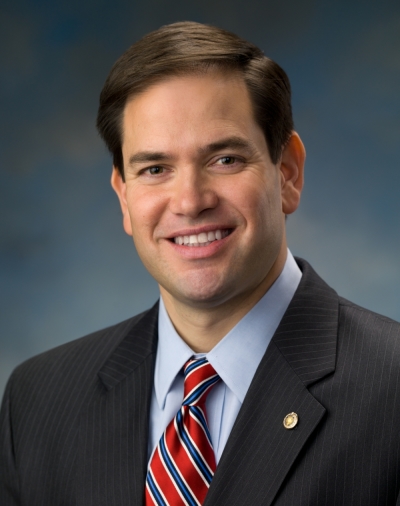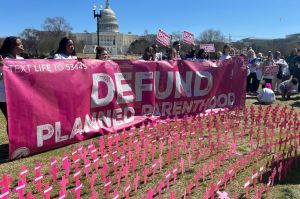With Generosity and Compassion, We Could See an AIDS-Free 21st Century

Coming of age in the 1980s, I can remember the palpable fear and uncertainty that existed in the early years of the HIV and AIDS epidemic. For a long time, this diagnosis was not only a death sentence but one that came with a social stigma that its victims carried with them to their graves.
And then America was introduced to a young boy in Indiana named Ryan White, who had contracted the virus during a blood transfusion. He showed us that this is a virus that does not discriminate; it is one that impacts people of all ages, on all continents, of all races, and from all socioeconomic backgrounds. Ryan White showed us that every AIDS victim is a child of God, worthy of dignity and respect, and fighting the disease took on a moral dimension that had been absent.
Over time, the stories of Ryan White and other victims of HIV and AIDS created an important groundswell of support for policies to combat HIV/AIDS. A landmark law named after Ryan White has helped millions of Americans, including many low-income patients in Florida, receive the life-saving treatments they need. Early on in my Senate term, I saw firsthand how critical this program could be when we succeeded in pressuring the U.S. Department of Health & Human Services to clear the waiting lists of 8,600 patients in 13 states — including over 3,800 in Florida — for the AIDS Drug Assistance Program.
Throughout my time in the Senate, I have also seen one of the great successes of President George W. Bush continue to flourish: the President's Emergency Plan for AIDS Relief (PEPFAR). Among its many fruits, PEPFAR has single-handedly given millions of babies in Africa a life free of HIV/AIDS despite their mothers carrying the infection. America's faith community deserves a great deal of credit for helping champion and implement this initiative — staffing clinics, mounting educational campaigns and working through the church and other religious institutions in Africa to combat this global scourge. Americans should be proud of the millions of lives we've been able to prolong and save as a result. Congress and the next president should continue to make PEPFAR a priority.
The most critical development in the fight against HIV and AIDS is how medical innovators from the U.S. and around the world have increased efforts to find a cure — one that is closer today than it's ever been. Due to advances in medical science — as well as the humanitarian commitment of the American people — there are millions of people receiving HIV/AIDS medications and living longer, more productive lives that would otherwise be without hope. To be sure, the lives of people with HIV/AIDS are not easy, but medical advances have resulted in a transformational development once thought impossible in the 1980s and early 1990s: HIV/AIDS "victims" have become HIV/AIDS "survivors."
However, the battle against HIV and AIDS is not finished, as more than 35 million people around the world now live infected. We've seen infection rates climb in recent years, particularly among minority communities and young women. With heroin use increasing around various parts of the country, the risks of HIV/AIDS infection have also increased. Awareness, education, medical treatment and finding a cure remain essential public health goals in the fight against HIV and AIDS.
Nonetheless, we've come a long way. Towards the end of the 20th century, HIV/AIDS was striking down millions of Americans, many in the prime of their lives. Early on in this new century, we are seeing the fruits of American leadership in combatting HIV and AIDS bring the prospect of curing people who are infected and having an AIDS-free generation within reach. To achieve this goal, we need to maintain a spirit of generosity and compassion, both as a nation and as individuals.
On this World AIDS Day, we remember those we have lost to AIDS, pray for those living with the infection and recommit our nation to the goal of making this an AIDS-free century.





























